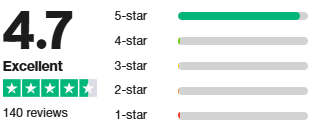Warm Work Pants UK: Durability & Comfort in Cold Weather – 2025 Guide
Introduction
Need reliable Warm Work Pants in the UK that deliver on both comfort and protection during those chilly, wet months? If your workday doesn’t stop when the temperature drops, then the right pair of insulated, waterproof, and hardwearing trousers becomes more than just a preference—it becomes essential gear.
Whether you’re part of an outdoor maintenance crew braving icy winds, a warehouse worker loading pallets in unheated spaces, or a construction worker exposed to sudden downpours, this guide walks you through exactly what to look for. We’ll break down materials like fleece liners, Thinsulate™ insulation, and DWR-treated fabrics, while also considering region-specific UK climate needs. With performance features like taped seams, reinforced knees, and moisture-wicking liners, warm work trousers can significantly improve your daily grind.
Why Warm Work Pants Matter in the UK Climate
The UK’s weather is unpredictable—rain, wind, dampness, and cold often arrive together. Many standard work trousers simply aren’t built to cope with extended exposure to such elements. Even a couple of hours in freezing or soggy trousers can impact productivity, morale, and health.
❄️ Staying Warm = Staying Safe
Cold legs can reduce mobility, increase fatigue, and lead to errors. In some environments, it can even be dangerous—slippery surfaces, reduced concentration, and tight muscles can all result from inadequate clothing.
🌧️ Protection from the Elements
Waterproof and wind-resistant pants with proper thermal linings help you:
- Maintain body heat
- Stay dry and focused
- Avoid layering too heavily (which can restrict movement)
UK Temperature Bands & Regional Needs
📉 Typical Winter Temperatures (Jan–Feb):
- Average Range: 2–7°C
- Highlands, coastal areas, and Northern England frequently dip below freezing or see near-constant damp.
🌧️ Rainfall Considerations:
- Coastal & Highland Areas: These zones are often saturated with moisture. For these, pants with PU-coated or laminated shells, sealed seams, and quick-dry linings are highly recommended.
💡 Tip: Always check if the trousers are fully waterproof (not just water-resistant), especially if you’ll be kneeling or seated on wet surfaces.
The Link Between Comfort & Productivity
Cold, damp, or poorly fitted workwear leads to:
- Distraction from the task at hand
- Lowered morale
- Increased physical strain
- A greater chance of accidents
On the flip side, insulated work trousers improve thermal regulation and can help teams stay more productive, focused, and efficient, even in suboptimal weather.
Features to Look For in Warm Work Pants
Choosing the right trousers means evaluating your work environment and selecting features that match performance needs.
🔥 Insulation & Lining
Look for thermal technologies that retain warmth without adding bulk:
- Fleece Lining: Soft, breathable, and excellent for trapping body heat
- Quilted Interiors: Add warmth while allowing for layering flexibility
- Thinsulate™: A premium synthetic insulation that’s thin, warm, and lightweight
🧤 Bonus: Pants with removable liners offer all-season versatility.
💧 Waterproofing & Breathability
It’s not just about staying dry—it’s about staying comfortable too. Sweat build-up inside non-breathable pants can leave you just as cold.
- PU-Coated Nylon: Durable, waterproof, but may lack breathability
- Soft-Shell with DWR (Durable Water Repellent): Balances waterproofing with moisture control
- Taped Seams & Storm Flaps: Keep water from sneaking in during downpours
🛠️ Durable Stitching & Reinforcements
Durability is essential for pants that are worn daily in tough environments:
- Kevlar Knee Patches: Extra protection for kneeling tasks
- Bar-Tack Seams: Reinforced stitching at stress points (e.g. pockets, knees)
- Scuff Guards at Cuffs: Prevent fraying around the hemline from boots or dragging
👖 Tip: Reinforced gussets in the crotch area also improve mobility and reduce tear risk.
Choosing the Right Warm Work Pants for Your Role
Different job sites call for different features. Here’s how to match pants to profession:
🏭 Warehouse Workers
- Recommended Features:
- Soft-shell with fleece lining
- Stretch panels at knees and waistband for ease of movement
- Lightweight insulation for indoor/outdoor transitions
🚧 Construction & Civil Works
- Recommended Features:
- Rugged canvas exterior with inner insulation layer
- Reinforced knees, multiple tool pockets
- Integrated hi-vis striping for safety compliance
🌿 Outdoor Maintenance Crews
- Recommended Features:
- Fully waterproof outer shell with zippered side vents
- Removable quilted liners for flexible layering
- Taped seams and scuff guards for all-weather terrain
💡 Bonus Tip: Pants with bib and brace options add extra core warmth without needing a full jacket.
Caring for Your Warm Work Pants
Proper care ensures longevity and performance of your gear.
🧼 Washing Tips
- Wash in cold water to protect fabric coatings and prevent shrinkage
- Avoid fabric softeners, as they reduce waterproofing efficiency
- Close all zippers and Velcro before washing to prevent snags
🌬️ Drying & Reproofing
- Air-dry on low heat or hang dry
- For soft-shell or DWR-coated pants, reapply water-repellent spray every 8–10 washes
🔍 Inspection Checklist
- Check after every few wears for:
- Frayed seams or split stitching
- Worn-out knee patches or cuff guards
- Fading of reflective strips (if applicable)
Conclusion
In summary, finding the right Warm Work Pants in the UK is about more than staying warm—it’s about enhancing safety, maintaining comfort, and boosting productivity, especially during the demanding months of autumn and winter.
By choosing the right mix of insulation, waterproofing, breathability, and durability, your team can stay protected and focused regardless of the forecast. From warehouse shifts to roadside repairs, the right trousers are your frontline defence against the elements.
🔍 Ready to gear up for the season?
Explore our 2025 collection of premium cold-weather work trousers, handpicked for UK professionals who work hard in any weather.



